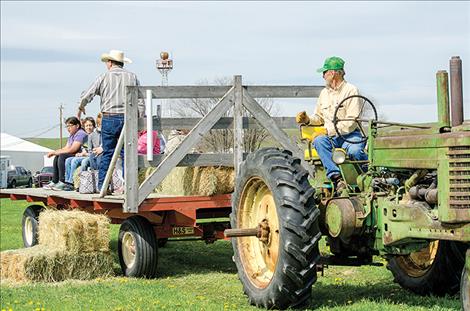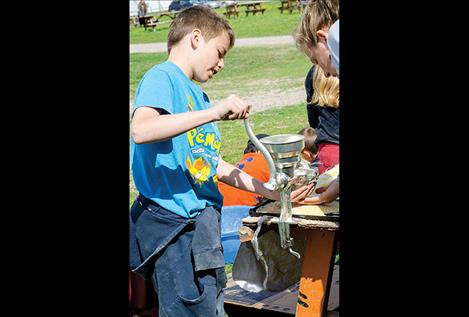Students learn origins of food, explore ag-related topics

Karen Peterson
Polson Rural Fire District firefighters teach students about putting out a blaze in open pastures and wildland areas during the Fourth Grade Ag Days on Friday. Farmers worry about fires as they work to produce crops, especially in hot dry months.

Karen Peterson
Curt Rosman drives a tractor while Sigurd Jensen talks to the kids about local weeds.

Karen Peterson
Scott Cameron, 10, grinds grain.

Karen Peterson
A group of bees fascinate kids at another station. Bees play an important part in food production with pollination.

Karen Peterson
Chuck Lewis shows kids how a wooden bee hive is put together.

Karen Peterson

Karen Peterson

Karen Peterson
Issue Date: 5/9/2018
Last Updated: 5/15/2018 7:37:51 PM |
By
Karen Greene
Keep Reading!
You’ve reached the limit of 3 free articles - but don’t let that stop you.















